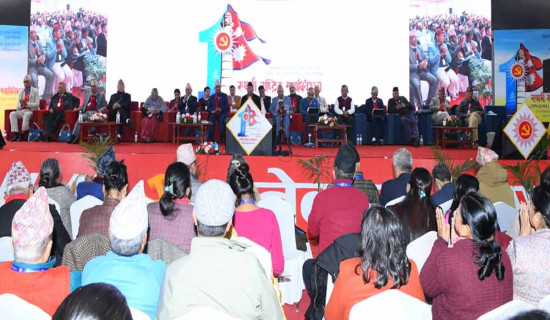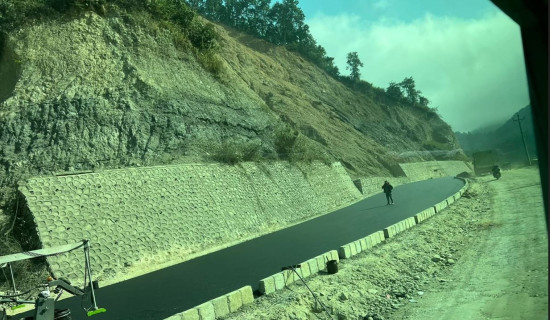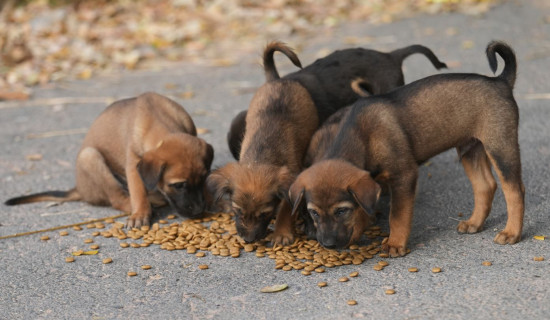- Monday, 15 December 2025
Bring Concrete Scheme To Revamp Tourism
Even when no noteworthy efforts have been made to rejuvenate the COVID-battered tourism industry in Nepal, this sector has been recovering steadily since the beginning of 2022. The nation has welcomed a total of 542,975 international tourists during the first 11 months this year. Of the total arrivals, as many as 88,582 travellers entered the nation in October while the number of tourists coming here in November stood at 72,653. But the country had hosted only 150,962 in 2021. Resurgence of COVID infections and restrictions imposed to contain the deadly viral disease were the major causes, leading to such low tourist arrivals last year. Foreign exchange earnings also fell considerably. However, the country’s latest tourism scenario seems to be quite encouraging. If this trend is any indication, the tourism sector is bound to return to normalcy in the near future with COVID-19 infections falling substantially worldwide.
International tourism has also been reviving gradually. The recovery process may get intensified in the days to come provided no other hurdles emerge. According to the UNWTO, international tourism is on track to reach 65 per cent of pre-pandemic levels by the end of 2022 as this sector continues to bounce back from the global public health crisis. The global tourism body’s data shows that about 700 million tourists travelled internationally between January and September 2022. The figure is more than double the number logged for the same period in 2021. The robust pent-up demand, improved confidence levels and removal of COVID-related restrictions in more destinations worldwide are attributed to such a recovery in international tourist arrivals.
Vital constituent
Tourism is one of the vital constituent of the national economy, with its remarkable contribution to maintaining foreign exchange reserves, and generating jobs and supporting numerous other sources of livelihood directly or indirectly. All the tourism-related activities had come to a crushing halt in Nepal and many other destinations globally with the outbreak of the COVID-19 pandemic. Consequently, a lot of people had to lose their jobs and other sources of livelihood. With increased tourist arrivals, the lost jobs are now being restored in the country. However, a huge investment made in the hospitality industry has gone down the drain owing to the protracted contagion while many tourism entrepreneurs and those employed in this sector have been displaced.
Being a delicate sector, tourism had suffered much in 2020 and 2021. As soon as Nepal opted for a strict nationwide lockdown in March 2020, the country was going through a loss of around Rs. 10 billion a month, based on average 2019 earnings. Hundreds of thousands of direct and indirect jobs were lost to the pandemic. This led to the contraction of the tourism industry’s contribution to the gross domestic product (GDP) severely. When tourism was growing leaps and bounds in 2018 and 2019, its contribution to GDP is believed to have reached nearly eight per cent.
The then government had introduced a tourism recovery plan. Under that initiative, tourism enterprises, including hotels, airlines, restaurants, travel and trekking companies, were given some facilities and incentives. But that scheme did not last long. And they continued to face difficulties as the tourism sector failed to recover fully due to appearance of new variants and sub-variants of the pandemic. Despite the revival of tourism activities, this sector has still been grappling with rising bank interest rates and sustenance of business amidst such an uncertainty.
In Nepal, tourism is the second largest source of foreign exchange earnings after the remittance sector. With the depletion of foreign currency reserves, the government was forced to put a ban on imports of vehicles and other luxury goods a couple of months ago. However, with increased tourist arrivals in recent times, the status of the country’s foreign reserves has now improved. Realising the importance of tourism, the incumbent government also unveiled another tourism recovery scheme about six months ago. Launched by the Ministry of Culture, Tourism and Civil Aviation, the action plan has prioritised making amendments to Tourism Policy 2065; Aviation Policy 2063; National Culture Policy 2067; Tourism Act 2035; Copyright Act 2059; and Mountaineering Expedition Regulations 2059. The ministry has aimed at amending those policies and laws in order to help facilitate tourism growth. But no solid progress seems to have so far been made in this connection.
Aviation infrastructure
Since many foreign airlines have resumed their flights to and from Nepal in the post-COVID situation, the country has now good air access to numerous tourist source markets. Some new international carriers have also launched their services in the country. With the operation of the Gautam Buddha International Airport based in Siddharthanagar, it has become easier for international airlines to operate flights. The Pokhara International Airport is also in the process of opening. Mechanical test flights were recently conducted at this new airport. However, due to a lack of proper promotion and marketing, no significant number of airlines has shown their interest in flying to and from these new aviation infrastructures.
A lacklustre performance of the national carrier — Nepal Airlines Corporation (NAC) — is what is another major obstacle to the country’s tourism growth. Though the airline has planes required for both short and long routes, it has been unsuccessful in developing itself into a credible carrier. This is mainly due to a lack of an efficient management. The Nepal Tourism Board (NTB) has also been reeling from the same situation. Learning from the past mistakes, the upcoming government must work towards improving the management of such important tourism stakeholders. It will also have to come up with a more comprehensive plan to give a much-needed boost to the tourism industry which could be a game changer for the national economy.
(Dahal is Deputy Executive Editor of this daily.)
















